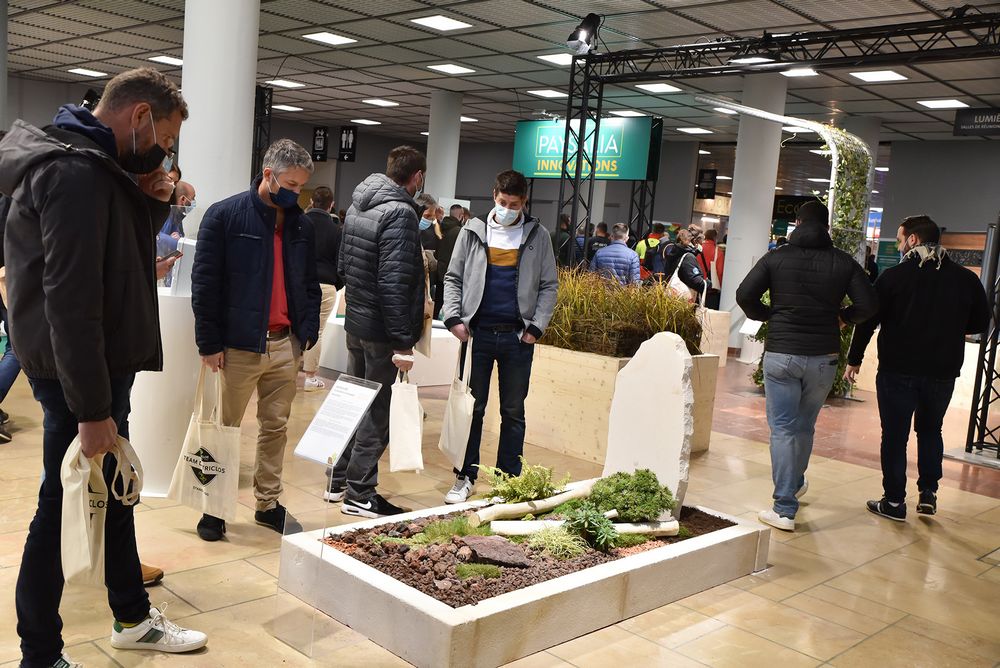How to bring cemeteries back to life by vegetalization
Prohibition of chemical pesticides in cemeteries means that local authorities will have to devise new maintenance strategies.

Transforming cemeteries into “green lungs” through vegetalization was the subject of a conference given at Paysalia 2021 by Maxime Guerin from Plante&Cité and Flore Diradourian from Astredhor. On July 1, 2022, the French Labbé Law will be extended to prohibit the use of chemical pesticides in cemeteries. This means that local authorities will have to devise new maintenance strategies. In other countries, vegetalizing cemeteries is also an interesting strategy!

© Photo credit: ydumortier / Adobe Stock
Vegetalizing cemeteries requires a methodical approach
Less and less frequented, cemeteries could, however, become spaces bringing life and nature into towns. But local authorities will encounter some restrictions:
- As cemeteries are highly charged in minerals, any chemical-free maintenance strategy needs to be adapted.
- As cemeteries are highly symbolic places, visitors do not expect to see weeds flourishing there.
Cemetery vegetalization projects cannot succeed without an effective communication campaign targeting the general public to explain the benefits of pesticide-free management, including:
- the creation of a “green space” to support the return of biodiversity;
- the creation of a cool space;
- the preservation of visitors’ health.
The conference addressed solutions for maintaining cemeteries without pesticides.
“Natural” cemeteries are already a trend
Every country has its own “cemetery culture” and the “all mineral” cemetery really only started in the 20th century. So the first obstacle is to change cultural habits. “Green” cemeteries are already happening. For example, Germany has funerary forests, the USA has “green burials” in Prairie Creek and France has the Niort natural cemetery, created in 2014. With new challenges already transforming our towns, there is little doubt that our cemeteries will also evolve.
How to manage an urban greening project?
Advice on good chemical-free cemetery management
Based on in situ research in Normandy, France, the advice given by Maxime Guerin and Flore Diradourian is clear on how to rethink local authority cemetery maintenance strategies.
What grassing technique to use when vegetalizing cemeteries?
You will need to use differentiated maintenance management to include the different characteristics of each cemetery - paths prone to trampling, spaces between tombs too narrow to permit maintenance equipment access, sunshine and shadow…
Concerning grass choice, experiments showed that ryegrass grows quickly but dominates the other species quickly too. Fescue takes longer to become established but, on the other hand, needs less maintenance. However its fragility makes it unsuitable in high-traffic places.
The conference also raised the following points about grass sowing methods:
- Sowing grass by hand is the best and fastest method for small surfaces as no machinery is needed. But hand-sown grass growth is uneven and its lack of resistance to erosion means you will probably need to resow bare patches.
- Mechanical grass sowing guarantees easy working and sowing regularity but requires preliminary preparation of the ground and costs more due to the use of machinery.
- Hydraulic grass sowing only requires one passage with no soil preparation and ensures sustainable and homogeneous sowing. The only disadvantage of this technique is the machinery transport cost.
Which hardy perennials to choose for chemical-free cemetery maintenance?
About forty species were tested during this experiment. Hardy perennials which develop in tufts and remain in the space allotted to them without invading the monuments are particularly interesting.
After having studied their ease of installation, their resistance to weeds, their propensity for invasion and their looks, Maxime Guerin and Flore Diradourian recommend the following species in particular:
- Centaurea simplicaulis (centaury with simple leaves)
- Prunella vulgaris (self-heal)
- Acaena microphylla (New Zealand burr)
- Frankenia laevis (sea heather)
- Polygonum “Dimitry” (creeping knotweed)
Note that flower meadows are also interesting as they add more biodiversity but need to be watched as they could cover the tombs.
More information about chemical-free maintenance
And why not vegetalize tombstones?
It is an idea from French company Infiniflore and its atypical creation imagined by Franck Serra who won the title of Master Gardener 2021. The idea? To vegetalize mineral monuments.
A bold step forward which visitors to Paysalia 2021 discovered on their way into the show as an example of a landscaped tomb was presented in the Paysalia Innovations space. An idea perfectly in tune with the vegetalization of cemeteries!

© Photo credit: Nicolas Rodet
Rarely highlighted, cemeteries are nevertheless true oases of greenery that local communities should explore in the future. If the concept of vegetalizing cemeteries is only in its early days, regulations banning chemical weed killers and the need to create new green spaces are sure to see it grow rapidly. Perhaps that will encourage visitors to frequent these places of memory.
Follow landscaping news with Paysalia
© Icons: Icons8

